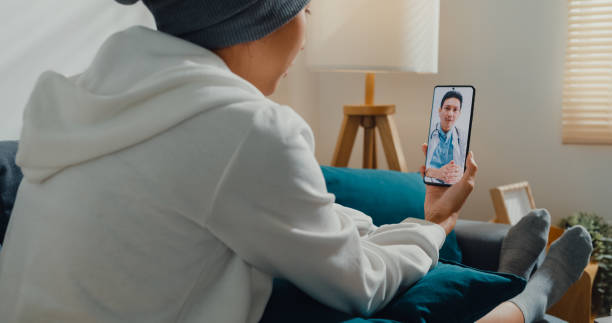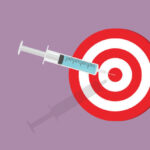Quality care should be the priority for remote patient monitoring (RPM) and chronic care management (CCM). These complementary technologies work to improve patient outcomes. This article compares Medicare RPM and CCM billing codes. It also discusses the benefits of outsourcing RPM and CCM services to a third-party provider.
RPM and CCM: A Lot in Common
Chronic care management services use telehealth technology between in-office visits for Medicare patients with 2 or more chronic conditions. These conditions are expected to last at least 12 months or until the patient’s death. Fortunately, the Centers for Medicare & Medicaid Services (CMS) recognizes that CCM services are critical to patient care. That is because CCM promotes better health, and better health reduces overall healthcare costs.
Access to care providers between office visits provides consistency with treatment, which is crucial in managing chronic diseases. Physicians can track patient biometric data between office visits with remote patient monitoring. RPM helps reduce hospitalizations because a physician can intervene before hospitalization is needed.
While RPM and CCM seek to improve patient health with connected care, they differ, especially in regards to billing. To sustain RPM and CCM programs, healthcare organizations must have someone who understands RPM and CCM billing.
Remote Patient Monitoring CPT Code Overview
Organizations must use proper CPT codes for the appropriate RPM and CCM billing of services. Below is a list of the 2024 RPM CPT codes:
- 99453: Covers the initial set-up and patient education on equipment. This is a one-time fee. $19.65
- 99454: Reimburses for the supply of devices, collection, transmission, and reporting of services to the clinician. $46.50
- 99457: This code is for remote physiologic monitoring services performed by a physician or qualified healthcare professional, the first 20 cumulative minutes of RPM services over 30 days. $48.14
- 99458: Payment for RPM services performed by qualified clinical staff for an additional 20 minutes of RPM services over 30 days. $38.64
- 99091: Covers the collection and interpretation of data by the physician or qualified healthcare professional for 30 minutes. $52.71
It is essential to note that Medicare has a ’16-day RPM requirement.’ This means that billing for CPT code 99453 and CPT code 99454 requires the patient to use the RPM device and transmit the data for 16 or more days during a 30-day period.
Chronic Care Management CPT Codes
Using the proper CCM CPT codes ensures that a healthcare organization seizes every opportunity to capture all costs for Medicare reimbursement.
This is a quick overview of CCM CPT codes:
- 99490: Payment for a minimum of 20 cumulative minutes over 30 days of non-face-to-face time monitoring the care plan. $61.57
- 99491: Covers the initial 30 minutes of care the physician or qualified healthcare professional provides. $83.18
- 99437: Additional 30 minutes of care a physician or qualified healthcare professional provides. $58.62
- 99439: This is for any additional 20 minutes of care clinical staff provides. $47.16
This list itemizes the complex CCM CPT codes:
- 99487: Covers a minimum of 60 cumulative minutes over 30 days of non-face-to-face consultation, establishing or monitoring a care plan. $131.97
- 99489: CPT 99487 pays for each additional 30 minutes of non-face-to-face consultations. $71.06
RPM and CCM Billing: FAQs
Of course, the key to ensuring a successful CCM and RPM program is preparation and planning. You probably know that healthcare organizations can get help by outsourcing RPM and CCM billing services. However, finding the partner takes research and time. Before getting into the benefits of outsourcing, we will first answer some frequently asked questions regarding billing for RPM and CCM.
Can RPM and CCM be Billed Together?
CMS understands that the analysis required to furnish RPM services works with CCM services. Thus, health organizations can bill RPM CPT code 99457 and CCM CPT code 99490. Conversely, qualified health professionals count the time needed for RPM and CCM codes in a single month. Therefore, to bill CPT 99457 and CPT 99490, the provider must deliver at least 40 minutes of service. For instance, 20 minutes of CCM and 20 minutes of RPM. This requirement prevents double billing.
Which Devices Qualify for RPM Services?
The first thing to remember is that remote patient monitoring devices should be FDA-cleared. Likewise, the device must be able to transmit patient physiologic data. To clarify, this means that a patient cannot self-report data. In addition, the data transferred must be used to diagnose, treat and understand the patient’s health status.
A few examples of acceptable RPM devices include:
“Under General Supervision” and Billing
In 2019, CMS clarified that remote patient monitoring allows CPT codes 99457 and 99458 to be billed ‘under general supervision.’ This means that qualified clinical staff can complete services under the general supervision of the billing practitioner on an incident basis. Nevertheless, this guideline is subject to each state’s law, licensure, and scope of practice.
CPT Codes 99453 and 99454: How Often Are They Billed?
CPT 99453 and 99454 are billable only once during a 30-day period, even if a patient has multiple devices. The services associated with all the medical devices must be billed:
- By only one practitioner.
- Only once per patient.
- Per 30-day period.
- Only with at least 16 days of data collection.
How often can CPT Code 99457 be used?
It is important to remember that this code provides reimbursement for both patient care coordination and physician-patient interaction. According to guidelines, at least 20 minutes of interactive, virtual communication must occur during one calendar month.
What do CPT codes 99487, 99489, and 99490 cover?
At this time, each code covers time spent directly by clinical staff. The time devoted by the qualified billing professional also counts toward the time.
What are the Benefits of Outsourcing for RPM and CCM Billing?
Unsurprisingly, Medicare reimbursement for RPM and CCM requires precise recordkeeping. The billing process may be time-consuming and require significant staffing resources. However, third-party RPM companies can help. Integrating remote patient monitoring solutions into existing workflows is relatively easy when an RPM company implements and supports the medical staff.
RPM companies can assist with managing Medicare billing and data management tasks. For example, RPM service companies can track and collect data and provide detailed reports. This takes the stress out of managing the data.
7 Additional Benefits of RPM
Many RPM companies provide FDA-cleared remote monitoring devices for easy integration with health organization systems. Top remote patient monitoring services companies can also help onboard staff and provide technical support.
Some additional benefits of outsourcing include the following:
- Provide reporting of patients that are billable per period.
- Identify patients close to reaching a billable event threshold.
- Set alerts and reminders for patients.
- Improved patient satisfaction, engagement, and measurement adherence.
- Lower hospitalization rates.
- Improved documentation, tracking efficiency, and reporting.
- Generate significant monthly recurring revenue.
Whether your healthcare partners are interested in adopting remote patient monitoring to increase patient engagement, create a more efficient workflow, or increase revenue, Tenovi can help you find a better solution. Book a free demo today.






